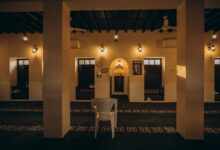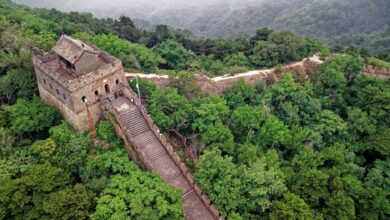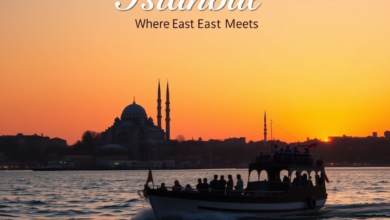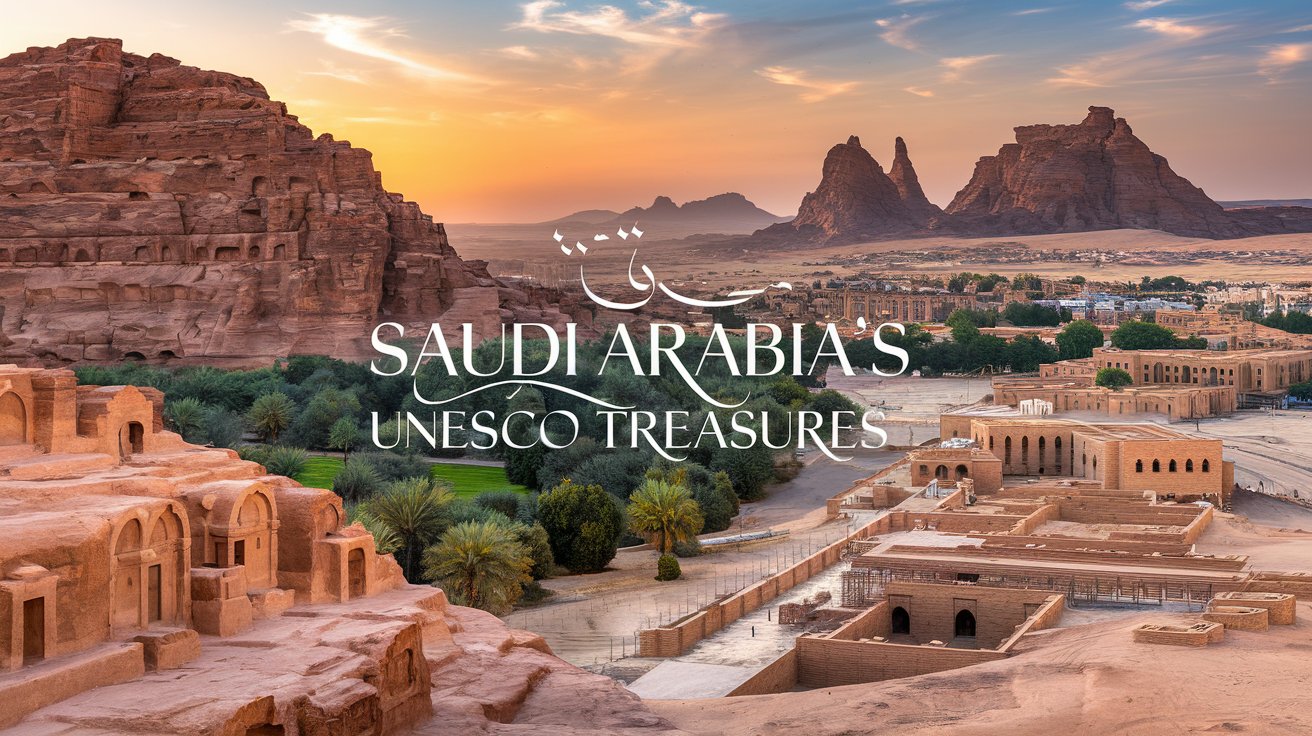
5 Must-Visit UNESCO World Heritage Sites in Saudi Arabia
Imagine stepping into a world where ancient wonders and modern marvels coexist, where history whispers from every stone, and where cultural treasures await at every turn. 
From the lush oasis that defies the desert to the breathtaking rock-cut tombs rivaling Petra, Saudi Arabia’s heritage sites are a testament to human ingenuity and the passage of time. But here’s the catch – despite their incredible significance, these sites remain hidden gems, often overshadowed by more famous global attractions. Are you ready to uncover these awe-inspiring locations and add them to your travel bucket list? Let’s embark on a journey through Saudi Arabia’s most captivating UNESCO World Heritage Sites, each with its own unique story waiting to be discovered.
Al-Ahsa Oasis: A Green Haven in the Desert
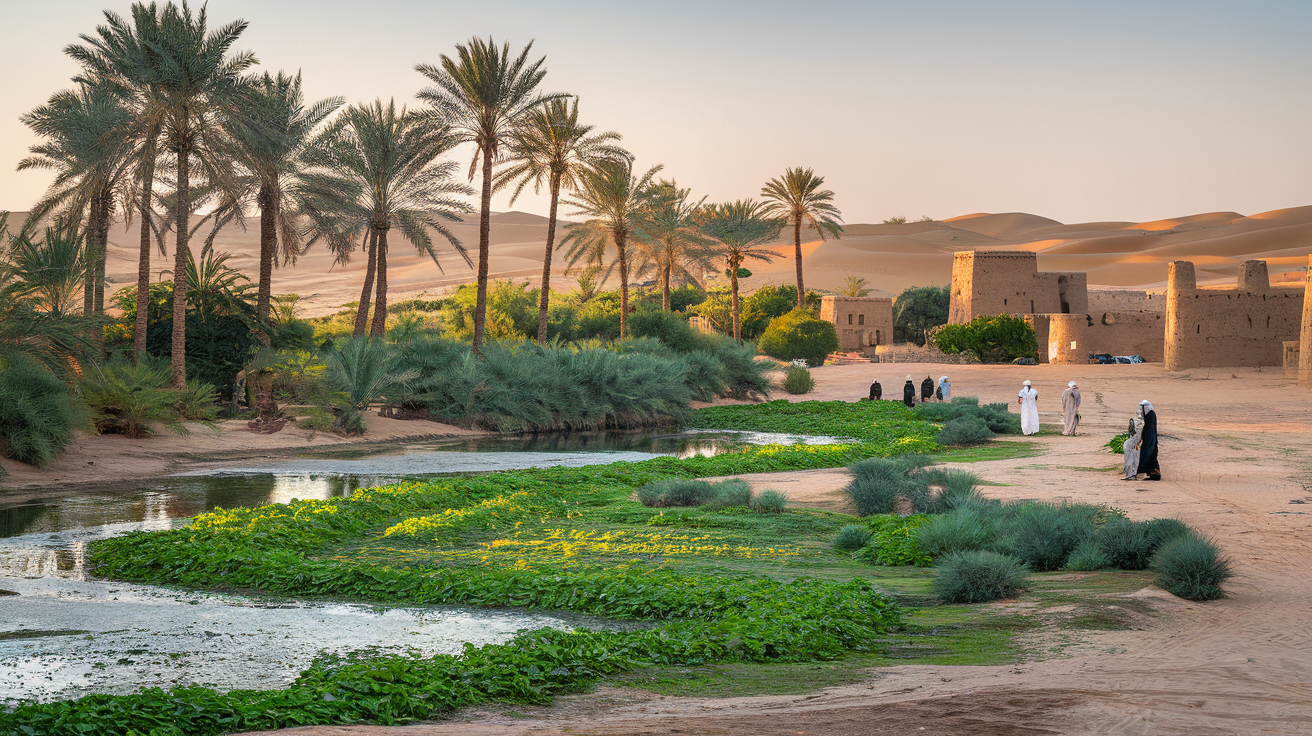
Historical significance and cultural importance
Al-Ahsa Oasis, a UNESCO World Heritage Site since 2018, stands as a testament to human ingenuity and perseverance in the face of harsh desert conditions. This verdant oasis, located in the Eastern Province of Saudi Arabia, has been a cradle of civilization for thousands of years, playing a crucial role in the development of the Arabian Peninsula.
The historical significance of Al-Ahsa Oasis can be traced back to the Neolithic period, with archaeological evidence suggesting human habitation as early as 5000 BCE. Over the millennia, it has been a vital crossroads for trade routes, connecting the Arabian Peninsula with Mesopotamia, Persia, and beyond. This strategic location has made Al-Ahsa a melting pot of cultures, influencing its architecture, cuisine, and traditions.
Culturally, Al-Ahsa has been a center of learning and artistic expression. The oasis has produced numerous scholars, poets, and artisans who have contributed significantly to Arab and Islamic culture. Traditional crafts such as pottery, weaving, and metalwork continue to thrive here, preserving ancient techniques passed down through generations.
Unique irrigation system and water management
At the heart of Al-Ahsa’s success lies its ingenious irrigation system, a marvel of ancient engineering that has sustained life in this arid region for millennia. The oasis boasts over 2.5 million date palms and is home to more than 150 natural springs, making it the largest oasis in the world.
The irrigation system of Al-Ahsa is a complex network of canals, aqueducts, and wells that distribute water efficiently throughout the oasis. This system, known locally as “al-uyun” (the springs), is carefully managed to ensure sustainable use of the precious water resources.
| Component | Description | Function |
|---|---|---|
| Aflaj | Underground water channels | Transport water from springs to agricultural areas |
| Qanats | Vertical shafts connected to underground tunnels | Access and maintain the water system |
| Saqiya | Water wheels | Lift water from wells for distribution |
| Al-Uqud | Aqueducts | Carry water across valleys and depressions |
The effectiveness of this ancient system is evidenced by its continued use today, albeit with modern improvements. The traditional knowledge of water management has been passed down through generations, ensuring the oasis’s survival and prosperity.
Diverse flora and fauna
Despite its desert surroundings, Al-Ahsa Oasis is a haven of biodiversity. The abundance of water and the careful management of resources have created a unique ecosystem that supports a wide variety of plant and animal life.
The oasis is home to over 100 different plant species, ranging from native desert plants to cultivated crops. Some of the notable flora include:
- Date palms (Phoenix dactylifera) – the dominant and most economically important species
- Sidr trees (Ziziphus spina-christi) – valued for their fruit and medicinal properties
- Tamarisk (Tamarix aphylla) – used for windbreaks and erosion control
- Acacia trees – providing shade and habitat for wildlife
The diverse plant life supports a rich fauna, including both resident and migratory species. Birds such as the hoopoe, bulbul, and various species of doves and pigeons are common sights. The oasis also provides a crucial stopover for migratory birds traveling between Europe and Africa.
Mammals found in and around the oasis include:
- Arabian gazelle
- Desert hedgehog
- Cape hare
- Various species of bats
The unique ecosystem of Al-Ahsa Oasis also supports numerous insect species, including butterflies, dragonflies, and bees, which play crucial roles in pollination and maintaining the ecological balance.
Traditional agriculture and date palm cultivation
Agriculture has been the lifeblood of Al-Ahsa Oasis for millennia, with date palm cultivation at its core. The oasis is renowned for its high-quality dates, producing over 100 varieties, each with its unique flavor profile and characteristics.
Date palm cultivation in Al-Ahsa is not merely an agricultural practice; it’s a cultural heritage deeply embedded in the local way of life. The traditional methods of date palm cultivation involve:
- Pollination: Skilled farmers manually pollinate female date palms using pollen from male trees.
- Pruning: Regular pruning of fronds to maintain tree health and facilitate harvesting.
- Harvesting: Dates are typically harvested by hand, ensuring only the ripest fruits are picked.
- Processing: Traditional methods of sorting, cleaning, and drying dates are still employed alongside modern techniques.
| Date Variety | Characteristics | Best Use |
|---|---|---|
| Khalas | Golden-amber color, soft texture | Fresh consumption, gift-giving |
| Shishi | Dark color, firm texture | Cooking, long-term storage |
| Rziz | Light color, crisp texture | Fresh consumption, export |
| Khunaizy | Red-brown color, rich flavor | Premium desserts, confectionery |
Beyond date palms, the oasis supports a diverse array of crops, including:
- Citrus fruits (lemons, limes, oranges)
- Figs
- Pomegranates
- Vegetables (tomatoes, cucumbers, eggplants)
- Alfalfa (as animal feed)
This agricultural diversity not only ensures food security for the local population but also contributes significantly to the regional economy.
The traditional agricultural practices of Al-Ahsa Oasis are deeply intertwined with the social and cultural fabric of the community. Farmers often work cooperatively, sharing resources and knowledge. The agricultural calendar dictates many local festivals and traditions, such as the date harvest celebration.
In recent years, efforts have been made to blend traditional knowledge with modern agricultural techniques to improve yields and sustainability. These include the introduction of drip irrigation systems, organic farming practices, and the use of GPS technology for precision agriculture.
As we conclude our exploration of Al-Ahsa Oasis, it’s clear that this UNESCO World Heritage Site is far more than just a green spot in the desert. It’s a living testament to human resilience, ingenuity, and harmony with nature. The oasis serves as a model for sustainable desert agriculture and water management, offering valuable lessons for arid regions worldwide. Next, we’ll journey to another remarkable UNESCO site in Saudi Arabia, the Al-Hijr Archaeological Site, also known as Madain Saleh, where we’ll discover the fascinating remnants of the Nabatean civilization.
Al-Hijr Archaeological Site (Madain Saleh): The Nabatean Wonder

Now that we’ve explored the lush Al-Ahsa Oasis, let’s journey to another remarkable UNESCO World Heritage Site in Saudi Arabia: Al-Hijr Archaeological Site, also known as Madain Saleh.
Ancient rock-cut tombs and facades
Al-Hijr Archaeological Site, commonly referred to as Madain Saleh, is a testament to the architectural prowess of the ancient Nabatean civilization. This sprawling complex, covering an area of approximately 52 hectares, is home to an impressive array of rock-cut tombs and facades that have withstood the test of time for over two millennia.
The site features 111 monumental tombs, each meticulously carved into the sandstone outcrops that dot the desert landscape. These tombs, dating back to the 1st century BCE to the 1st century CE, showcase the Nabateans’ exceptional skill in working with the natural rock formations. The facades of these tombs are adorned with intricate designs, including elaborate pediments, columns, and friezes that blend Hellenistic and Roman architectural styles with local Nabatean elements.
One of the most striking features of Madain Saleh is the Qasr al-Farid, or “Lonely Castle.” This imposing structure, standing at 72 feet tall, is carved from a single rock outcrop and features four distinct pilasters on its facade. Despite its name, it’s not actually a castle but a grand tomb, likely intended for a person of great importance within the Nabatean society.
Similarities to Petra in Jordan
Madain Saleh shares many similarities with its more famous counterpart, Petra in Jordan. Both sites were created by the Nabateans and feature similar architectural styles and construction techniques. However, there are some key differences that make Madain Saleh unique:
| Feature | Madain Saleh | Petra |
|---|---|---|
| Size | Smaller, more compact site | Larger, more extensive complex |
| Visitor numbers | Less crowded, more intimate experience | More popular, often crowded |
| Preservation | Better preserved due to less foot traffic | Some wear due to higher visitor numbers |
| Landscape | Open desert setting | Enclosed within a narrow valley |
| Architectural focus | Primarily tombs and religious structures | Mix of tombs, temples, and civic buildings |
While Petra may be more well-known, Madain Saleh offers visitors a chance to experience Nabatean architecture and history in a more serene and less crowded environment. The site’s excellent state of preservation allows for a more intimate connection with the ancient Nabatean civilization.
Historical trade route significance
Madain Saleh’s importance extends beyond its architectural marvels. The site played a crucial role in the ancient incense and spice trade routes that connected the Arabian Peninsula with the Mediterranean world. As a key stop along these routes, Madain Saleh became a thriving center of commerce and cultural exchange.
The Nabateans, known for their business acumen and engineering skills, transformed this remote desert outpost into a prosperous city. They developed sophisticated water management systems, including dams, cisterns, and wells, which allowed them to sustain life and agriculture in the harsh desert environment. These innovations not only supported the local population but also provided essential resources for caravans traveling along the trade routes.
Madain Saleh’s strategic location made it an important crossroads for various cultures and civilizations. This is evident in the diverse influences seen in its architecture and artifacts, which reflect a blend of Nabatean, Hellenistic, Roman, and local Arabian styles. The site’s inscriptions, found on tomb facades and rock faces, provide valuable insights into the Nabatean language, culture, and religious practices.
Preservation efforts and visitor experience
In recent years, Saudi Arabia has made significant efforts to preserve and promote Madain Saleh as a major cultural and historical attraction. These efforts culminated in the site’s inscription as a UNESCO World Heritage Site in 2008, making it the first such site in Saudi Arabia.
Preservation work at Madain Saleh includes:
- Ongoing archaeological excavations and research to uncover more about the site’s history and significance.
- Conservation of the rock-cut tombs and facades to protect them from natural erosion and human impact.
- Development of visitor facilities and infrastructure to enhance the tourist experience while minimizing impact on the site.
- Implementation of strict guidelines for tourism to ensure sustainable visitation and protection of the site’s integrity.
The visitor experience at Madain Saleh is designed to be both educational and awe-inspiring. Guided tours are available, led by knowledgeable local experts who provide in-depth information about the site’s history, architecture, and cultural significance. These tours often include:
- Visits to the most impressive tombs and facades, including Qasr al-Farid.
- Exploration of the ancient Hijaz Railway station, which adds another layer of historical interest to the site.
- Opportunities to view ancient Nabatean inscriptions and rock art.
- Visits to the on-site museum, which houses artifacts discovered at Madain Saleh and provides context for the site’s importance.
For those interested in photography, Madain Saleh offers stunning opportunities, especially during the golden hours of sunrise and sunset when the desert light casts a magical glow on the ancient stone structures. Many visitors choose to camp nearby, allowing them to experience the site under the starry desert sky and witness the breathtaking sunrise over the tombs.
As we move forward in our exploration of UNESCO World Heritage Sites in Saudi Arabia, we’ll next discover the At-Turaif District, a place that holds immense significance in the founding of the Saudi state.
At-Turaif District: Birthplace of the Saudi State
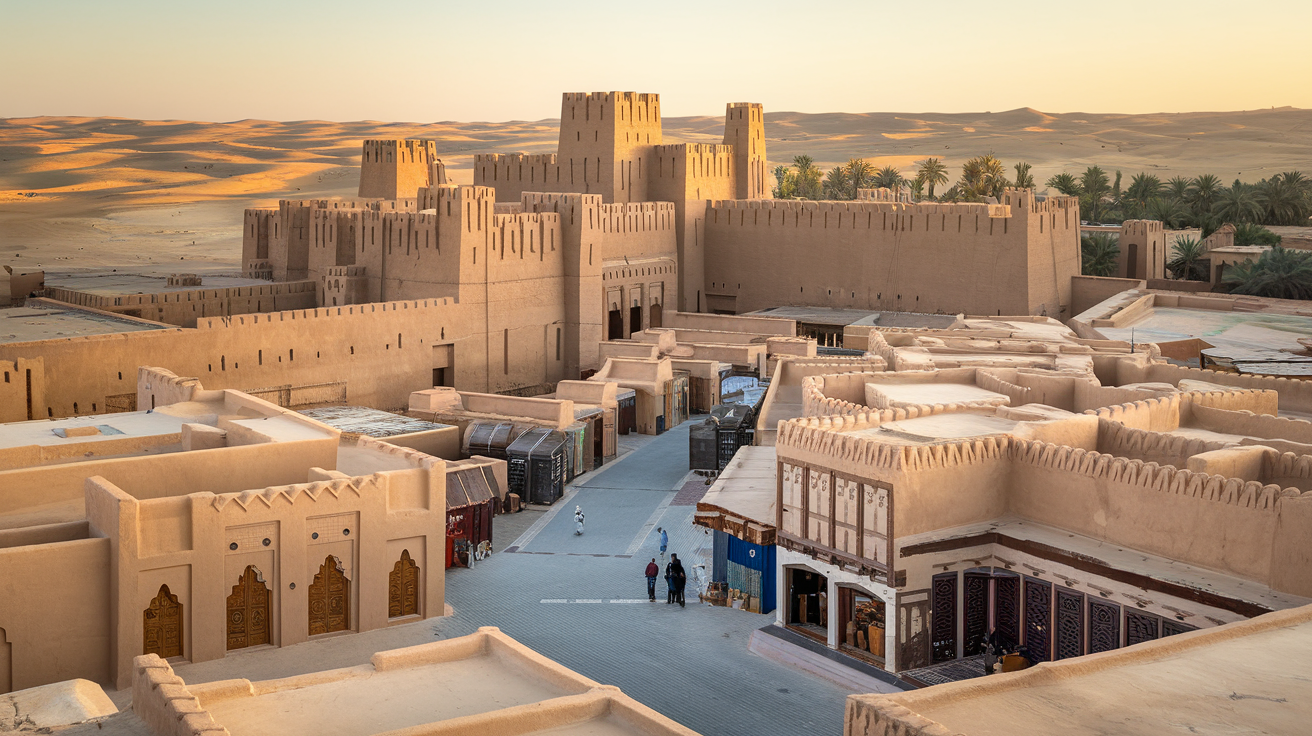
Architectural marvels of Najdi style
At-Turaif District, located in the heart of Diriyah, stands as a testament to the rich cultural heritage of Saudi Arabia. This UNESCO World Heritage Site showcases the remarkable Najdi architectural style, which has played a crucial role in shaping the identity of the region. The district’s buildings, constructed primarily from mud bricks and palm wood, exemplify the ingenuity of traditional Arabian design in adapting to the harsh desert climate.
The Najdi style is characterized by its distinctive features, including:
- Thick walls: Providing excellent insulation against extreme temperatures
- Small windows: Minimizing heat gain and maintaining privacy
- Intricate geometric patterns: Adorning doors, windows, and interior spaces
- Courtyards: Offering private outdoor spaces and natural ventilation
- Flat roofs: Utilized for sleeping during hot summer nights
One of the most impressive structures in At-Turaif is the Salwa Palace, which served as the residence of the ruling Al Saud family. This massive complex, spanning over 10,000 square meters, showcases the grandeur of Najdi architecture on an unprecedented scale. The palace features multiple courtyards, reception halls, and living quarters, all intricately designed to reflect the power and prestige of its royal inhabitants.
Another architectural gem within At-Turaif is the Saad bin Saud Palace, known for its stunning facade and well-preserved interiors. The palace’s design incorporates traditional elements such as mashrabiya (wooden lattice screens) and ornate plasterwork, demonstrating the high level of craftsmanship achieved by Najdi artisans.
| Architectural Feature | Function | Aesthetic Value |
|---|---|---|
| Thick mud-brick walls | Insulation and structural support | Earthy, organic appearance |
| Small windows | Temperature control and privacy | Creates interesting light patterns |
| Geometric patterns | Decoration and cultural expression | Adds visual interest and complexity |
| Courtyards | Ventilation and social gathering space | Provides a sense of openness within enclosed structures |
| Flat roofs | Multipurpose space for sleeping and activities | Contributes to the distinct silhouette of Najdi buildings |
The architectural marvels of At-Turaif not only showcase the aesthetic beauty of Najdi style but also highlight the practical solutions developed by early inhabitants to cope with the challenging desert environment. These structures stand as a testament to the ingenuity and adaptability of Saudi Arabian architecture, offering visitors a glimpse into the region’s rich cultural past.
Political and religious importance
At-Turaif District holds immense significance in Saudi Arabian history as the birthplace of the first Saudi state. Established in 1744 by Muhammad bin Saud, the district became the capital of the Emirate of Diriyah, marking the beginning of what would eventually become the modern Kingdom of Saudi Arabia.
The political importance of At-Turaif is deeply intertwined with its religious significance, as it was here that Muhammad bin Saud formed an alliance with the religious reformer Muhammad ibn Abd al-Wahhab. This partnership, known as the Muhammed ibn Saud and Muhammed ibn Abdul Wahhab pact, laid the foundation for the religious and political ideology that would shape the future of Saudi Arabia.
Key aspects of At-Turaif’s political and religious importance include:
-
Center of governance: As the seat of power for the first Saudi state, At-Turaif was the hub of political decision-making and administration.
-
Religious reform: The district became the epicenter of the Wahhabi movement, which sought to purify Islamic practices and return to a more orthodox interpretation of Islam.
-
Educational hub: At-Turaif housed numerous madrasas (religious schools) where scholars and students from across the Arabian Peninsula came to study Islamic theology and jurisprudence.
-
Diplomatic importance: The district hosted foreign emissaries and played a crucial role in establishing diplomatic relations with neighboring powers.
-
Symbol of national identity: At-Turaif represents the origins of Saudi Arabian statehood and serves as a powerful symbol of national pride and cultural heritage.
The Imam Muhammad ibn Saud Mosque, located within At-Turaif, stands as a testament to the district’s religious significance. This mosque, with its simple yet elegant design, embodies the principles of Wahhabi Islam and served as a center for religious gatherings and education.
| Aspect | Political Significance | Religious Significance |
|---|---|---|
| Foundation | Birthplace of the first Saudi state | Center of Wahhabi religious reform |
| Leadership | Seat of the Al Saud ruling family | Home of influential religious scholars |
| Education | Training ground for administrators and diplomats | Hub for Islamic studies and theology |
| Influence | Extended political control over much of the Arabian Peninsula | Spread Wahhabi ideology throughout the region |
| Legacy | Laid the groundwork for modern Saudi Arabia | Shaped the religious landscape of the country |
The political and religious importance of At-Turaif District cannot be overstated. It represents the crucible in which the modern Saudi state was forged, combining political ambition with religious reform to create a powerful and enduring legacy. Today, At-Turaif stands as a reminder of the kingdom’s origins and the complex interplay between politics and religion that continues to shape Saudi Arabian society.
Restoration projects and museum exhibits
In recognition of its historical and cultural significance, At-Turaif District has undergone extensive restoration and preservation efforts. These projects aim to safeguard the site’s architectural heritage while making it accessible to visitors and researchers. The Saudi Commission for Tourism and National Heritage, in collaboration with UNESCO, has implemented a comprehensive restoration plan that balances conservation with modern amenities.
Key aspects of the restoration projects include:
-
Structural reinforcement: Strengthening the mud-brick buildings to withstand environmental factors and ensure long-term stability.
-
Material conservation: Using traditional techniques and materials to repair and maintain the original structures.
-
Landscape rehabilitation: Restoring the surrounding environment to reflect the historical context of the site.
-
Infrastructure development: Implementing modern utilities and visitor facilities without compromising the site’s authenticity.
-
Digital documentation: Creating detailed 3D models and archives to aid in future conservation efforts and research.
The restoration of At-Turaif has not only preserved its physical structures but has also transformed the district into a living museum. Several buildings within the site now house exhibits that showcase the rich history and culture of the region. These museum exhibits offer visitors an immersive experience, bringing to life the stories of the first Saudi state and the people who lived there.
Notable museum exhibits in At-Turaif include:
-
Salwa Palace Museum: Housed in the restored Salwa Palace, this museum offers a glimpse into the daily life of the ruling family and the political history of the first Saudi state.
-
Military Museum: Showcasing the weaponry and military strategies of the early Saudi state, this exhibit highlights the challenges faced in unifying the Arabian Peninsula.
-
Horse Museum: Dedicated to the Arabian horse, this museum explores the importance of horses in Bedouin culture and their role in the expansion of the Saudi state.
-
Traditional Crafts Museum: Displaying traditional Saudi crafts and artisanal techniques, this exhibit preserves the cultural heritage of the region.
-
Diriyah Museum: Offering a comprehensive overview of At-Turaif’s history, from its founding to its UNESCO World Heritage status.
| Restoration Aspect | Technique Used | Benefit |
|---|---|---|
| Structural reinforcement | Injection of lime-based grouts | Improves building stability without altering appearance |
| Material conservation | Use of traditional mud-brick making techniques | Maintains authenticity and teaches traditional skills |
| Landscape rehabilitation | Replanting of native species | Recreates historical environment and improves visitor experience |
| Infrastructure development | Underground installation of modern utilities | Provides necessary amenities while preserving visual integrity |
| Digital documentation | 3D laser scanning and photogrammetry | Creates accurate records for future conservation and research |
The restoration projects and museum exhibits at At-Turaif District have transformed this UNESCO World Heritage Site into a dynamic cultural destination. Visitors can now walk through the restored streets, explore the historic buildings, and engage with interactive exhibits that bring Saudi Arabia’s rich history to life. These efforts not only preserve the physical remnants of the past but also ensure that the stories and cultural significance of At-Turaif continue to inspire and educate future generations.
As we conclude our exploration of At-Turaif District, it’s clear that this UNESCO World Heritage Site offers a unique window into Saudi Arabia’s past. From its architectural marvels to its political and religious significance, and now through its carefully curated restoration and museum exhibits, At-Turaif stands as a testament to the enduring legacy of Saudi Arabian culture and history. Next, we’ll journey to another remarkable UNESCO site in Saudi Arabia, exploring the vibrant history and cultural significance of Historic Jeddah, the gateway to Mecca.
Historic Jeddah: Gateway to Mecca
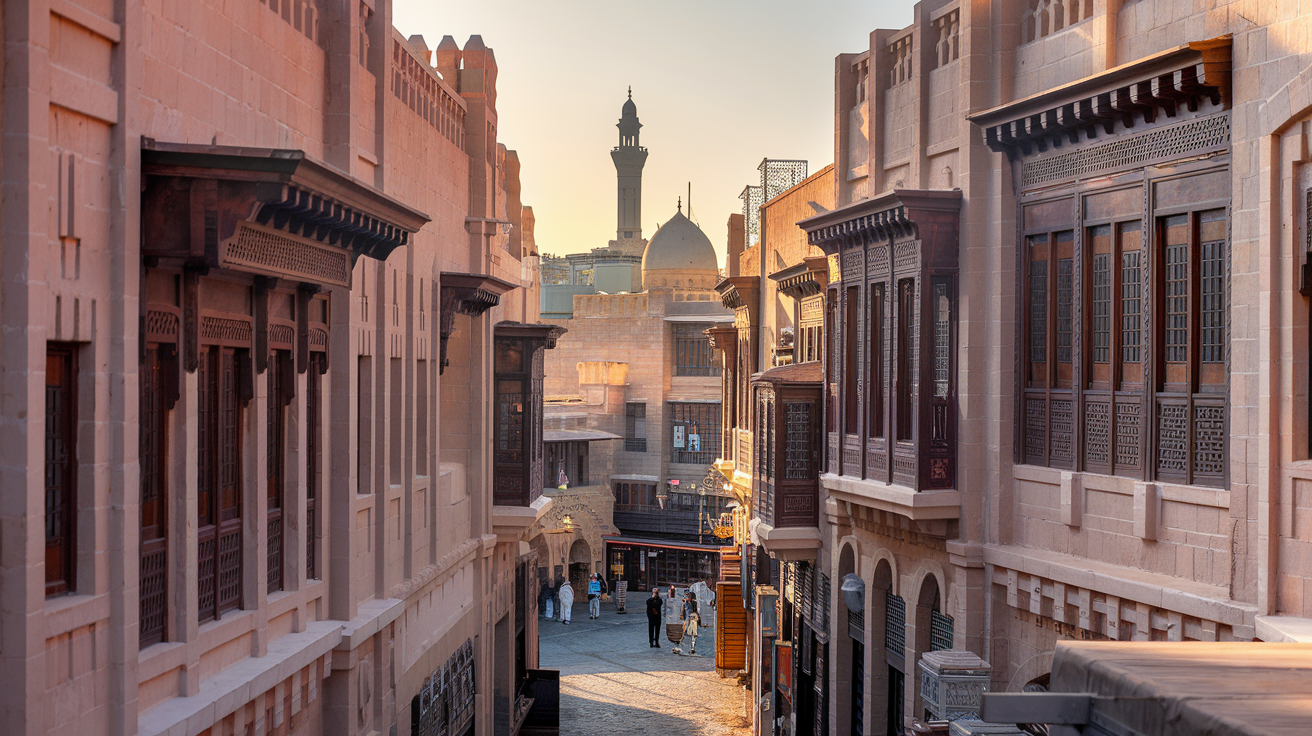
Unique coral architecture of Al-Balad
As we delve into the cultural tapestry of Saudi Arabia’s UNESCO World Heritage Sites, our journey brings us to Historic Jeddah, a city that has long served as the gateway to Mecca. At the heart of this ancient port city lies Al-Balad, a district renowned for its distinctive coral architecture that has withstood the test of time.
Al-Balad, which means “the town” in Arabic, is a marvel of traditional urban planning and architectural ingenuity. The buildings in this historic quarter are constructed using coral stones sourced from the nearby Red Sea, a technique that dates back centuries. This unique building material not only provides a sturdy foundation but also offers natural insulation against the harsh desert climate.
The coral houses of Al-Balad are characterized by their towering facades, often reaching up to seven stories high. These structures feature intricate wooden lattice screens known as mashrabiya, which serve both aesthetic and functional purposes. The mashrabiya allow for privacy while facilitating air circulation, creating a natural cooling system in the sweltering Saudi heat.
One of the most striking features of Al-Balad’s architecture is the elaborate wooden balconies that adorn the buildings. These ornate structures, known as roshan, are not just decorative elements but also serve as extensions of living spaces, providing shade and capturing cool breezes from the sea.
Multicultural influences on art and design
Historic Jeddah’s position as a major port city has made it a melting pot of cultures for centuries. This rich multicultural heritage is vividly reflected in the art and design elements found throughout Al-Balad.
The architectural styles in Al-Balad showcase a fascinating blend of influences from various Islamic cultures, as well as traces of Ottoman, Indian, and even European designs. This fusion is evident in the ornate carvings, colorful stained glass windows, and geometric patterns that adorn the buildings.
One of the most notable examples of this cultural amalgamation is the mosque architecture in Al-Balad. The mosques feature a unique combination of traditional Arabian design elements with influences from other Islamic architectural styles, creating a distinct Hejazi aesthetic.
The interior decor of many buildings in Al-Balad further exemplifies this multicultural influence. Intricate ceiling frescoes, often featuring floral motifs and calligraphy, draw inspiration from various Islamic artistic traditions. The furniture and textiles found in these historic homes also reflect a blend of local craftsmanship and imported designs from across the Islamic world.
| Architectural Element | Origin | Description |
|---|---|---|
| Coral stone construction | Local | Sourced from the Red Sea, provides natural insulation |
| Mashrabiya | Middle Eastern | Wooden lattice screens for privacy and ventilation |
| Roshan | Hejazi | Ornate wooden balconies for shade and cooling |
| Geometric patterns | Islamic | Intricate designs influenced by various Islamic cultures |
| Stained glass | European/Ottoman | Colorful windows showcasing multicultural influences |
Traditional markets and bustling port history
No exploration of Historic Jeddah would be complete without delving into its vibrant markets and rich maritime heritage. The traditional souks of Al-Balad have been the lifeblood of the city for centuries, serving as hubs of commerce, culture, and social interaction.
The most famous of these markets is Souq Al-Alawi, a labyrinthine network of narrow alleyways lined with shops selling everything from spices and textiles to gold and traditional crafts. The atmosphere in these souks is electric, with the air filled with the aroma of exotic spices and the sounds of merchants haggling with customers.
Another notable market is Souq Al-Nada, known for its traditional clothing and textiles. Here, visitors can find intricately embroidered thobes, colorful abayas, and handwoven carpets that showcase the region’s rich textile heritage.
The bustling port history of Jeddah is intrinsically linked to its role as the gateway for pilgrims traveling to Mecca. For centuries, the city’s port has welcomed ships from across the Islamic world, bringing not just pilgrims but also traders, scholars, and artisans who have contributed to the city’s diverse cultural landscape.
The Bab Al-Bunt, an ancient sea gate, stands as a testament to Jeddah’s maritime history. This historic structure once served as the main entrance to the city for pilgrims arriving by sea. Today, it serves as a poignant reminder of Jeddah’s enduring significance in Islamic history and culture.
Conservation challenges and opportunities
While Historic Jeddah’s inclusion on the UNESCO World Heritage list in 2014 has brought much-needed attention to this cultural gem, it has also highlighted the urgent need for conservation efforts. The delicate coral stone structures of Al-Balad face numerous threats, including natural weathering, urban development pressures, and the challenges of adapting to modern living standards.
One of the primary conservation challenges is the deterioration of the coral stone buildings due to humidity and salt erosion. The porous nature of coral makes it particularly vulnerable to these environmental factors, necessitating careful restoration techniques that balance preservation with structural integrity.
Another significant challenge is the exodus of residents from Al-Balad to more modern areas of Jeddah. This demographic shift has led to the abandonment of many historic buildings, accelerating their decay. However, this challenge also presents an opportunity for adaptive reuse projects that can breathe new life into these structures while preserving their historical significance.
The Saudi government, in collaboration with UNESCO and local conservation organizations, has initiated several projects aimed at preserving and revitalizing Historic Jeddah. These efforts include:
-
Documentation and research: Comprehensive surveys and documentation of Al-Balad’s architectural heritage to inform conservation strategies.
-
Restoration projects: Careful restoration of key buildings using traditional techniques and materials.
-
Urban regeneration: Initiatives to encourage residents and businesses to return to Al-Balad, revitalizing the area while maintaining its historical character.
-
Tourism development: Sustainable tourism plans that balance preservation with the economic benefits of increased visitation.
-
Education and awareness: Programs to educate local communities and visitors about the importance of preserving Historic Jeddah’s cultural heritage.
These conservation efforts not only aim to preserve the physical structures of Al-Balad but also to safeguard the intangible cultural heritage embedded in its traditional crafts, customs, and way of life.
As we look to the future, the preservation of Historic Jeddah presents both challenges and opportunities. By embracing innovative conservation techniques and sustainable development strategies, this UNESCO World Heritage Site can continue to serve as a living testament to Saudi Arabia’s rich cultural heritage for generations to come.
Rock Art in the Hail Region: Prehistoric Masterpieces
Saudi Arabia’s UNESCO World Heritage Sites offer a captivating journey through time, showcasing the country’s rich cultural heritage and natural wonders. From the lush Al-Ahsa Oasis to the ancient Nabatean city of Al-Hijr, these sites provide a unique glimpse into the region’s fascinating history. The At-Turaif District, Historic Jeddah, and the Rock Art in the Hail Region further illustrate the diverse tapestry of Saudi Arabia’s past and present.
As you plan your next adventure, consider exploring these five remarkable UNESCO sites in Saudi Arabia. Each destination promises an unforgettable experience, blending history, culture, and natural beauty. By visiting these treasures, you’ll gain a deeper appreciation for the Kingdom’s heritage and its significant contributions to world civilization.

